
No television show has been more of a New York institution over the past two decades than "Law & Order". Few shows (and none recently) have had as many spin-offs as "Law & Order." And although, sadly, only one edition of the fabled franchise remains on the air, now's as good a time as ever to take a look at all the editions of "Law & Order" and semi-arbitrarily rank them.
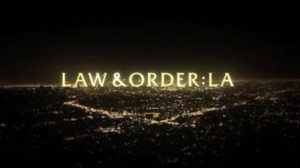 6. Law & Order: LA
6. Law & Order: LAIn case there weren't enough ways that New York bested Los Angeles, LA hosts the weakest link in the "Law & Order" chain. "Law & Order: LA", the most recent spin-off of the "Law & Order" franchise, was more or less a total bust that never took off after its debut in the fall of 2010, soon after the original "Law & Order" ended. It lasted just one season; even within that single season half the cast changed midway through; and Alfred Molina, who started the season as a lawyer, somehow became a detective. Alana de la Garza reprised her role from the original as the last assistant district attorney, moving out to the West Coast, and future "House of Cards" star Corey Stoll played a cop.
 5. Conviction
5. ConvictionWhether "Conviction" counts as part of "Law & Order" franchise is arguable; I include it because it stars Stephanie March, reprising her role from "Law & Order: SVU" as Assistant District Attorney Alexandra Cabot. While some other "Law & Order" series focused primarily on order, this one was mostly about the law. The series follows March after her character leaves the Witness Protection Program, as she leads a group of young and talented assistant district attorneys played by J. August Richards ("Angel"), Eric Balfour ("24"), and Jordan Bridges ("Rizzoli and Isles"). While it beats the LA edition simply by being based in New York, "Conviction" was unfocused and strayed too far from the core of what makes "Law & Order" work to be ranked any higher. The series was not renewed when its first season was over, suffering the ignominy of losing its time slot to CBS's "Numb3rs."
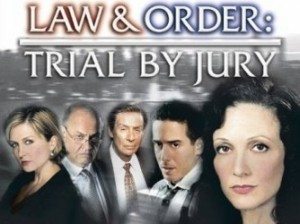 4. Law & Order: Trial by Jury
4. Law & Order: Trial by JuryBebe Neuwirth starred as Bureau Chief Assistant District Attorney Tracey Kibre in another law-centric edition of the franchise; Kirk Acevedo, of "Oz" and "Fringe", co-starred as an investigator. The jury played a much more important role in this series, and non-trial legal procedures like jury selection were featured. "Law & Order: Trial by Jury" lost to Numb3rs a year before "Conviction" even got the chance, but it is ranked slightly higher here because of a couple of appearances by Jerry Orbach -- who was slated to be a main cast member after he left the original "Law & Order", but sadly passed away while the show was being filmed. The show lost its heart and primary reason for viewing once Orbach left; Bebe Neuwirth is a talented actress, but she couldn't keep the show interesting by herself.
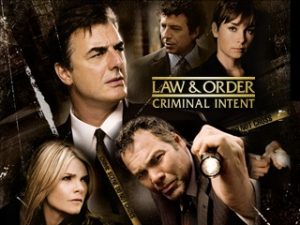 3. Law & Order: Criminal Intent
3. Law & Order: Criminal Intent"Law & Order: Criminal Intent" was unusual amongst "Law & Order" editions in that, in some seasons, pairs of detectives would alternate between episodes: as a result, the series could feel uneven, depending on your personal favorite detectives, and whether they appeared in any given episode. The series' other key quirk was that it showed the criminal and his or her actions, as well as the police and prosecutor. The standout who defined the series, whether you liked him or not, was Vincent D’Onofrio as Robert Goren, a brilliant detective and expert interrogator. While Goren could certainly be compelling at times, he was never my favorite, because he reminded me of the original main character in "CSI", Gil Grissom, due to his superhuman, Sherlock Holmes-like deductive powers. In contrast, most other "Law & Order" detectives always seemed far more like real people who put the pieces of the case together more slowly and believably, at approximately the same speed as the viewer.
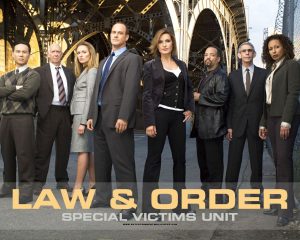 2. Law & Order: Special Victims Unit
2. Law & Order: Special Victims UnitBonus points for sadly being the only "Law & Order" still in production, "Special Victims Unit" has a rhythm and cadence all its own. More order than law, it may have had the most enduring detective pairing of any "Law & Order" with the combination of Christopher Meloni’s Elliot Stabler and Mariska Hargitay’s Olivia Benson. They’re presided over by Dann Florek's cool Captain Cragen, a character who appeared on the first three seasons of the original edition, and work alongside a strong B team, too: Ice-T as Finn Tutuola and Richard Belzer as John Munch. While Meloni left the show, Hargitay soldiers on, but her repartee isn't the same without her long-time partner -- replaced by Nick Amara, played by Danny Pino. Belzer notably has played character John Munch on a record 10 different shows, appearing as Munch on 449 total episodes of television programs.
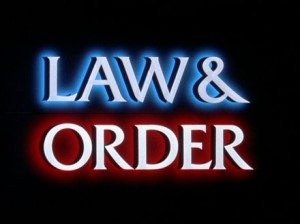 1. Law & Order
1. Law & OrderWhat can I say – sometimes the original is still the best. It’s certainly the longest-running, tying "Gunsmoke" at 20 seasons for the longest running non-animated primetime show of all time. It set the tone for all the spin-offs to come, and remained truest to the dispassionate dispensation of both law and order that became the series hallmark. Not every season was equally strong, but the series had high notes both early and late, with the great Jerry Orbach’s wry commentary as detective Lenny Briscoe (a highlight throughout the first half of the show), and the underrated pairing of detectives Anthony Anderson and Jeremy Sisto towards the end. Sam Waterston’s crusading district attorney Jack McCoy may go down as the most famous character on the show, but he was second to S. Epatha Merkerson, who played Lieutenant Anita Van Buren, in terms of total series appearances.